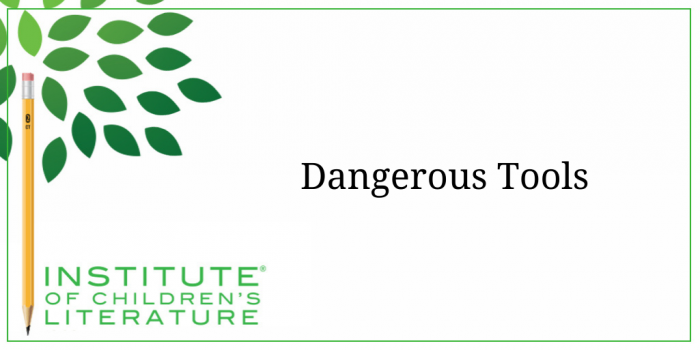1000 N. West Street #1200, Wilmington, DE 19801
© 2024 Direct Learning Systems, Inc. All rights reserved.

My husband is a woodworker. As a result, our garage is filled with things that can be really dangerous if you don’t know how to use them or if you use them too casually. Since I’m not a woodworker, I’ve lived in terror of all of the tools in there for years now. But lately, I’ve been slowly discovering that there are some power tools that I can learn to use and that make my own hobby (wood burning) easier. It’s been scary, but fun.

So how do we do that? First you can seek out instruction. Now, you can take a writing course or find lots of instruction online. But not every bit of instruction is created equal. When you see someone say, “No being verbs” or “Search and remove all adverbs,” know that is not going to be instruction to teach you how to use these more tricky elements. Look instead for the daring voices that show you how the things work.
When our children are very young, we say, “Hot stove! Don’t touch!” But when they mature, we invite them in and teach them how to cook and bake. Seek out the instruction for maturing writers, rather than the ones designed to keep beginners safe. Sure, if you venture outside the safe place, you might get a little singed, but you might make a truly fantastic story too.
Second, read many, many, many books. You’ll find writers who do every single thing you’ve been told not to do. Instead of becoming frustrated, look at the writing and ask yourself: “They used this, did it work for them?” Sometimes you might really feel it didn’t, and so that book won’t be a mentor text for you. Sometimes though, you’ll find yourself saying, “She did a lot more telling than showing, but I loved the book.” Or “he kept switching viewpoint but I was completely engaged and never got lost!” When that happens, you’re seeing a tricky tool in the hands of someone who has learned to use it.

Third, try it. This is one reason I love writing short stories. I write a lot of them, and they give me an opportunity to try using tricky tools. Maybe I’ll write a story in a fairy tale voice that is far more telling than showing. Can I do it and make it work? If I can, then I’ve expanded my writer’s toolkit. If it doesn’t work, well, at least I haven’t invested months in the exercise. One of my favorite short stories, one I just entered into a writing contest, came about because I wanted to try out a totally different kind of voice from any I’d used before. The result struck me as beautiful. Now, I’m not yet ready to try to sustain that type of voice for a novel, but I’m closer. I’ve grown.
So as this year is rushing towards its end, think about those things that you’ve been told never to do as a writer. Maybe put a few on your New Year’s resolutions list as tools you want to study, research and tinker with. Who knows, mastering a few tricky tools may be just what you need to take your writing to the next level. It can be challenging, but isn’t that why we’re writers in the first place?
With over 100 books in publication, Jan Fields writes both chapter books for children and mystery novels for adults. She’s also known for a variety of experiences teaching writing, from one session SCBWI events to lengthier Highlights Foundation workshops to these blog posts for the Institute of Children’s Literature. As a former ICL instructor, Jan enjoys equipping writers for success in whatever way she can.
1000 N. West Street #1200, Wilmington, DE 19801
© 2024 Direct Learning Systems, Inc. All rights reserved.
1000 N. West Street #1200, Wilmington, DE 19801
© 2024 Direct Learning Systems, Inc. All rights reserved.
1000 N. West Street #1200, Wilmington, DE 19801
© 2024 Direct Learning Systems, Inc. All rights reserved.
1000 N. West Street #1200, Wilmington, DE 19801
© 2025 Direct Learning Systems, Inc. All rights reserved.
1000 N. West Street #1200, Wilmington, DE 19801
©2025 Direct Learning Systems, Inc. All rights reserved. Privacy Policy.
4 Comments
I enjoyed this article. After reading an article about lyrical writing, I tried messing with the rules I’d learned. Most people who have read portions of my MS, have commented that the sentence structure is too choppy. Yes, it is written that way intentionally—In threes for the lyrical voice, In short sentences because a person under stress may think in bursts.
I read it out for the SCBWI great critique and that was the only group who got it, even commenting on how lyrical it sounded.
Now my dilemma is, do I change it for the reading masses, or hope there is an agent or publisher who gets what I am trying to do?